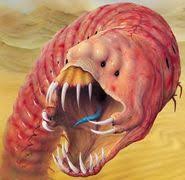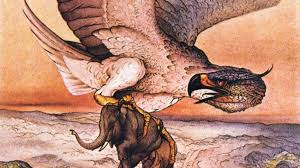Mythical Monsters: The Mongolian Death Worm

In an endless sea of golden sand, the Mongolian Death Worm hurls itself into the sky like a banner unfurling. For a moment, it seems to hang suspended in the air—all thirty feet of it, intestine-pink and oozing—before it strikes, arcing through the air to come crashing down upon its luckless prey. It leaves no trace of its appearance save the yellow shower of mucous spattered across the sand, deadly to the touch and able to corrode steel in under thirty seconds. Some witnesses even claim that the Worm is capable of spitting a concentrated stream at prey up to four hundred feet away; others swear that it disables prey with an electrical discharge before moving in for the kill.
Despite the discrepancies regarding the Worm’s hunting habits, most Mongolian locals agree that it is found only in certain areas of the Gobi Desert, most commonly the westernmost region along the Mongolian-Chinese border. They claim that it is primarily active in June and July, when rare rainfalls are more likely to penetrate the Gobi’s most isolated regions; during such rainfalls, the Worms come to the surface to breed, laying their eggs in the intestines of freshly-killed prey. They seem to prefer the corpses of camels for this purpose, likely due to their ability to better retain the nutrients necessary to sustain a nest of larval Worms.
Multiple expeditions into the far reaches of the Gobi have been undertaken in the hope of proving the Worm’s existence, most recently by famed Czech cryptozoologist and explorer Ivan Mackerle in 1990, 1992, and 2004. Inspired by the science-fiction novel Dune, Mackerle used a technique known as worm grunting, wherein vibrations are sent into the ground to induce worms to come to the surface. While useful for bait worms, Mackerle’s efforts—employing both motor-driven machines and small-grade explosives—were futile, though this did nothing to dampen his enthusiasm; he continued to pursue the trails of the Worm and other cryptids, producing a wide array of articles, books, and films before passing away in 2013.
Despite the lack of proof of its existence, the Mongolian Death Worm continues to capture the imaginations of cryptozoologists and science-fiction junkies alike. Although it may not burst from the sand to devour its prey, it is clear that as long as the legends still abound, the ghost of this fearsome beast will continue to haunt the picturesque dunes.







